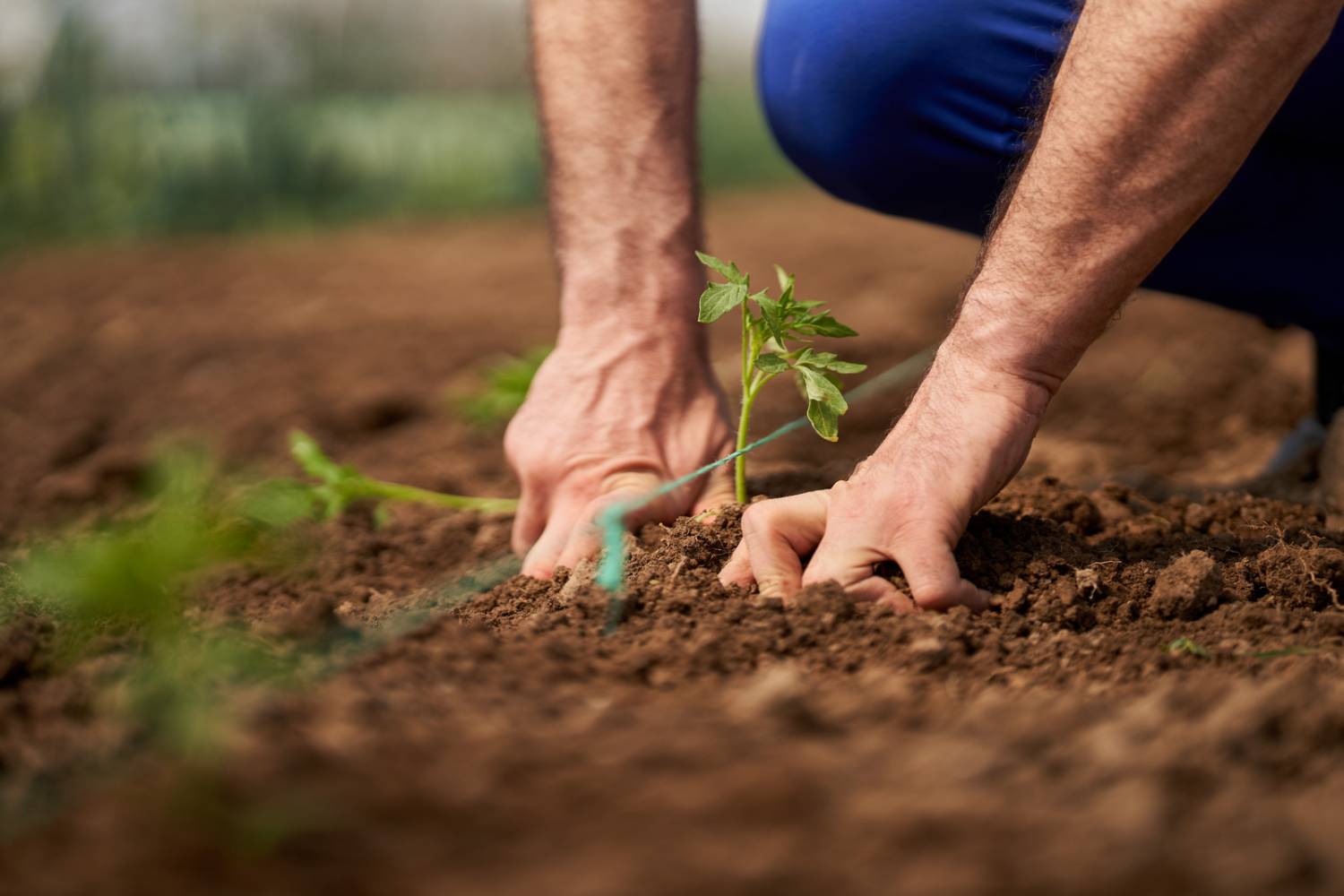
When it comes to growing tomatoes, one of the most important considerations is spacing. Tomato plants need room to grow and spread out so that they can produce an abundance of fruit and ensure good plant health. In this article, we'll share some expert tips on how to space your tomato plants for optimal results. Read on to learn more!
Why are tomato plants spaced apart?
One of the most common questions asked by people who are new to gardening is why tomatoe plants are spaced apart. The answer to this question lies in the fact that tomatoes are a vine crop and need plenty of space to grow.
If they are planted too close together, the vines will become tangled and the tomatoes will be less likely to ripen evenly. Moreover, Compact plants do not produce much yield as compared to the ones with proper spacing. In addition, plenty of sunlight is needed in order to ripen tomatoes properly, and overcrowding can prevent them from getting the necessary exposure.
Tomatoes need plenty of air circulation to prevent diseases from spreading. If the healthy plants are too close together, the leaves will touch each other and disease can easily spread from one plant to another.
The plants will compete for resources in case they are planted too close together, Therefore the tomatoes will be smaller and less flavorful. Spacing also allows us to walk between the rows without damaging the plants.
The ideal spacing between planted tomatoes for maximum yield

When it comes to planting tomatoes, there is a lot of debate over the ideal spacing between plants. Some people say that you should plant them close together so they can support each other, while others say that you should give them plenty of space to grow.
The spacing of tomato plants depends on the growth habit of the variety and the training system employed. Let's see how different spacings between plants affect tomato varieties.
Spacing for tomato plants
Farmers have been planting tomatoes in a grid pattern for years, but now it may not be the most efficient way to grow tomatoes. Farmers in the United States face a number of challenges, including unpredictable weather conditions and pests.
In order to increase their yields, many farmers are turning to tomato plantation spacing. When tomato plants are spaced 24 inches apart, they yield an average of 10.5 pounds per plant. When the plants are spaced 36 inches apart, they yield an average of 7.5 pounds per plant. So, 24 inches spacing is ideal.
Raised beds are a good option for smaller gardens. As tomatoes are large plants, they usually do best when planted on either end of the raised bed and kept in wire cages to give them enough space to grow.
Different spacing for different types of tomato varieties planted
There are many different tomato varieties available, and they can be grown in a number of different ways. Determinate tomato plants grow to a certain size and then stop, while indeterminate tomato plants (vining tomatoes) continue to grow until they are killed by frost. They can grow up to eight feet tall. They require support to stay upright and vertical.
Dwarf tomatoes are bred for container gardening, while beefsteak tomatoes are the classic large slicing type. Bush tomatoes grow up rather than out, while vine tomatoes need lots of space. There is a tomato for every garden. However, their growing needs differentiate based on the determinate and indeterminate varieties.
Spacing for determinate tomatoes
When planting determinate varieties (bush tomatoes), gardeners should leave enough space between plants to allow for good air circulation and easy access to the fruit. The general rule of thumb is to plant tomatoes 18-24 inches apart in rows that have 30-36 inches row spacing. Some gardeners prefer to stake tomatoes, so they should allow for extra space for staking at the base of the plant.
Spacing for indeterminate tomatoes
There are many variables to consider when gardening, and one of the most important variable is the spacing for indeterminate tomato plants. Indeterminate tomato varieties grow and produce fruit until killed by frost, so they need more space. The general rule of thumb is to plant them 18 to 24 inches apart in rows spaced 36 to 48 inches apart.
Tomato plant spacing in containers
When growing tomatoes in containers, it is important to provide enough spacing between plants. If there is not enough space, the plants will become crowded and will not produce as many tomatoes.
There is no one perfect way to space tomatoes in containers. Some gardeners prefer to plant them close together, while others give them plenty of room to spread out. The key is to find the method that works best for you and your tomatoes.
In general, tomato plants need at least 18 inches of space in each direction. If planting multiple containers of tomatoes, be sure to leave enough space between them so that the plants have room to grow.
What Factors Affect Tomato Spacing?

Tomatoes are a popular garden crop because they are easy to grow and produce a lot of fruit. Determining the spacing for tomatoes in your garden is important to ensure that the plants have enough room to grow and produce fruit. There are several factors that you need to consider when spacing tomato plants.
Soil Conditions
When growing tomatoes, there are a few things to consider when it comes to spacing. The size of the variety of tomatoes, the type of soil, and the climate all play a role in deciding how much space is needed between tomato plants.
Acidic or neutral soil may affect the size of the tomato plant. Tomatoes prefer soil with a pH between 6.5 and 7.9. Once the pH of the soil is adjusted, it should be maintained within that range.
Variety of Tomato
Tomato spacing is determined by the thickness of the fruit that is expected to be produced. For example, if you are expecting a fruit that is 1/2 inch thick, then the plants need to be spaced 10-12 inches apart in the row. Thicker fruit will require plants to be spaced further apart, and vice versa is applicable for thinner fruit.
Another important factor to consider when spacing tomatoes is the type of tomatoes. Heirloom tomatoes tend to be larger than hybrids, so they will need more space between plants.
Space requirements can also vary depending on the cultivar of tomato. Some cultivars, such as 'Beefsteak', can grow up to 1 pound in quantity, while other hybrid cultivars may only reach 6-8 ounces.
Row Width
As a gardener, you want to get the most out of your garden space. One way to do this is to optimize row width for tomato spacing. In general, the wider the row, the more tomatoes you can fit in a given space. But there are other factors to consider when determining the best row width for your garden.
Too much space and the plants may not produce as many tomatoes as they would if they were closer together. Not enough space and the plants may be too cramped, leading to fewer tomatoes and an overall less productive garden.
Distance Between Rows
The distance between rows in your garden will depend on the variety of tomatoes you are planting. For determinate tomatoes, plant 18-24 inches apart in rows spaced 3 feet apart. For indeterminate tomatoes, plant 24-36 inches apart in rows spaced 4 feet apart. These spacing recommendations would be inappropriate for indeterminate tomatoes allowed to sprawl over the ground.
Fertilizer, Light and Watering Needs
Tomatoes need at least six hours of sunlight per day. They also need regular watering and fertilizing to produce fruit. When deciding how far apart to plant your tomatoes, you need to take into account how much sun each plant will get, the size of the plant, and how much water and fertilizer each plant will need.
In general, you should space your tomato plants 18-24 inches apart in rows that are spaced 36-48 inches apart. If you live in a hot climate with limited rainfall, you may need to space the plants closer together so they can get more water.
What To Do With The Extra Space in tomato spacing?
When it comes to tomato spacing, there are a few options for what to do with the extra space. Some people choose to leave the space empty, while others plant another type of vegetable or herb in the space. However, others may use the extra space to plant a second row of tomatoes.
No matter what option you choose, make sure to keep the plants well-watered and fertilized. These practices will help ensure that you have a steady supply of tomatoes from early summer.
Unwanted growth of some plants
Weeds are pesky plants that can easily take over a garden, and when growing tomatoes in containers, it is important to learn how to control them. Weeds can quickly germinate and overtake tomato plants, stealing essential sunlight, water, and nutrients. Weeds also attract pests and diseases, making it more difficult for tomatoes to grow healthy and strong.
How to control the growth of unwanted plants
There are a few different ways to control weeds when growing tomatoes in containers. One method is to use mulch. Mulch is a layer of material that is placed over the soil surface to suppress weed growth.
Mulch can be made from organic or synthetic materials, such as straw, leaves, bark chips, or black plastic. Another method is to use herbicides. Herbicides are chemicals that kill weeds.
Planting some other useful plants in between the spaces
Tomatoes are a popular garden vegetable, but they can be tricky to grow. Proper spacing is key to a successful tomato crop. Apart from planting a new row of tomatoes, you can also place some other plant types in between the spaces.
Sunflowers make a great companion plant for tomatoes. They help to deter pests and improve the soil quality. Other good companion plants for tomatoes include nasturtiums, basil, and marigolds.
